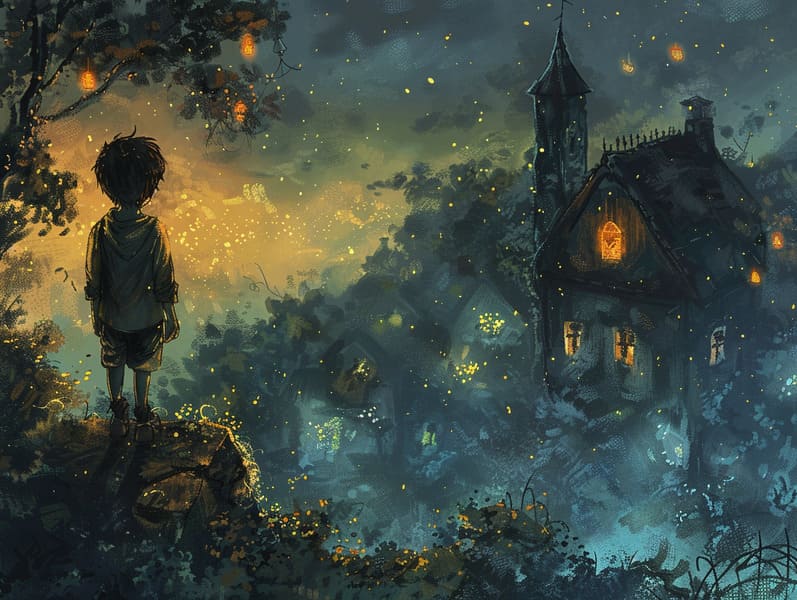Exploring the Roots of Famous Fairy Tales and the Everlasting Radiance.
Exploring the Roots of Famous Fairy Tales and the Everlasting Radiance.
Blog Article

Fairy tales have old origins. These narratives have been shared from one generation to the next ages before they were ever published. They came from a variety of traditions, including Indigenous traditions. They were initially narrated among grown-ups, often carrying themes and messages concerning the societal norms and beliefs of the time.
The renowned Brothers Grimm, Jacob and Wilhelm (the Grimm brothers), were among the first to compile and release many of these beloved stories. Their published works, "Grimm's Fairy Tales," included stories like "The Story of Cinderella," "The Story of Hansel and Gretel," and "Schneewittchen," which have since become hallmarks in the world of famous fairy tales. Similarly, Hans Christian Andersen's magical stories, such as "The Little Mermaid," and "The Duckling that Could," have stolen hearts worldwide, establishing their place in the pantheon of classic fairy tales.
Despite their ancient origins, these tales remain as pertinent as ever, especially as kids' bedtime tales. These enchanting tales are now available in different formats, including vibrantly illustrated books, fantastical animations, and online storybooks.
Their persistent charm can be credited to several captivating elements:
Significant Morals: Timeless fairy tales often present important moral lessons. Tales like "The Shepherd Boy and the Wolf" teach the benefit of sincerity, while "The Tortoise and the Hare" highlight the values of persistence and unassuming nature. These narratives offer children clear distinctions between right and wrong, guiding their moral compass in a kind yet lasting way.
Empathy and Understanding: Traditional fairy tales frequently present beings facing trials and tribulations, inspiring audiences to connect with their struggles and applaud their triumphs. For instance, "The Story of Beauty and the Beast" points out the significance of looking beyond appearances to acknowledge the inner being of a character, enhancing awareness and insight.
Cultural Knowledge: Many classic fairy tales are deeply ingrained in the cultural contexts from which they sprang. Discovering these tales can provide illuminating insights into different backgrounds, advancing a sense of world awareness and appreciation.
Creativity and Fantasy: The enchanted elements in old fairy tales—fairy godmothers—fuel children’s fantastical thinking. These tales take readers to extraordinary realms, invigorating creative ideas and a sense of excitement that remains a lifetime.
Classic fairy tales are not only spellbinding but also enlightening. They work as spellbinding tools in building various thinking and feeling skills in the young. When old fairy tales are spoken, they foster language skills by offering new phrases and complex sentence structures. This practice also enhances hearing abilities and mindfulness, as children track the narrative, anticipating to see what happens next.
Furthermore, debating the themes and characters of old fairy tales can advance analytical skills and critical thinking. Little ones are taught to recognize patterns, make predictions, and make sense of cause and effect. These examinations also benefit young readers voice their thoughts and feelings, adding to their emotional intelligence.
In today’s modern era, the abundance of online fairy tales has made these fairy tales more acquirable than ever. Digital sites and digital apps give ample collections of famous fairy tales that can be experienced or heard anytime, anywhere. Fairy tales recited are particularly well-received, extending an interactive method for kids to savor these enchanting tales. Read-aloud stories and read-to-me videos take characters and settings to life, often supported by enchanting sound effects and music that intensify the tale experience.
The timeless charm of classic fairy tales lies in their ability to evolve to modern times while continuing with their underlying messages. Contemporary retellings of these narratives often showcase more inclusive characters and modern settings, making them relatable to today’s audience. However, the underlying themes of valor, charity, and righteousness remain unchanged, continuing to impact audiences of all ages.
Traditional fairy tales also offer a sense of familiarity and closeness. They offer a orderly narrative with a definite beginning, middle, and end, often wrapping up with the ending of conflicts and the triumph of virtue over corruption. This assuredness can be encouraging for little ones, offering a sense of steadiness in an always shifting world.
Classic fairy tales continue to delight and teach new generations, maintaining their appeal and relevance in modern society. As children's night stories, they grant access to a perfect more info blend of charm and enlightenment, backing moral values, empathy, and creativity. The availability of internet fairy tales and the well-liked nature of fairy tales recited guarantee that these traditional narratives remain available to new generations.
By preserving and telling these stories, we continue to exalt the rich tapestry of folklore and cultural heritage. Whether you are viewing a vibrantly illustrated book, discovering a digital collection, or playing an narrated book, the allure of timeless fairy tales is always within reach. These tales illustrate of the consistent presence of fairy tales and its ability to tie us across time and space.
Even if you are perusing a gorgeously illustrated book, experiencing a digital library, or listening via an voice book, the allure of traditional fairy tales is always within reach.
These stories reveal of the timeless power of storytelling and its ability to join us across epochs and places, weaving a spell that delights and instructs alike.